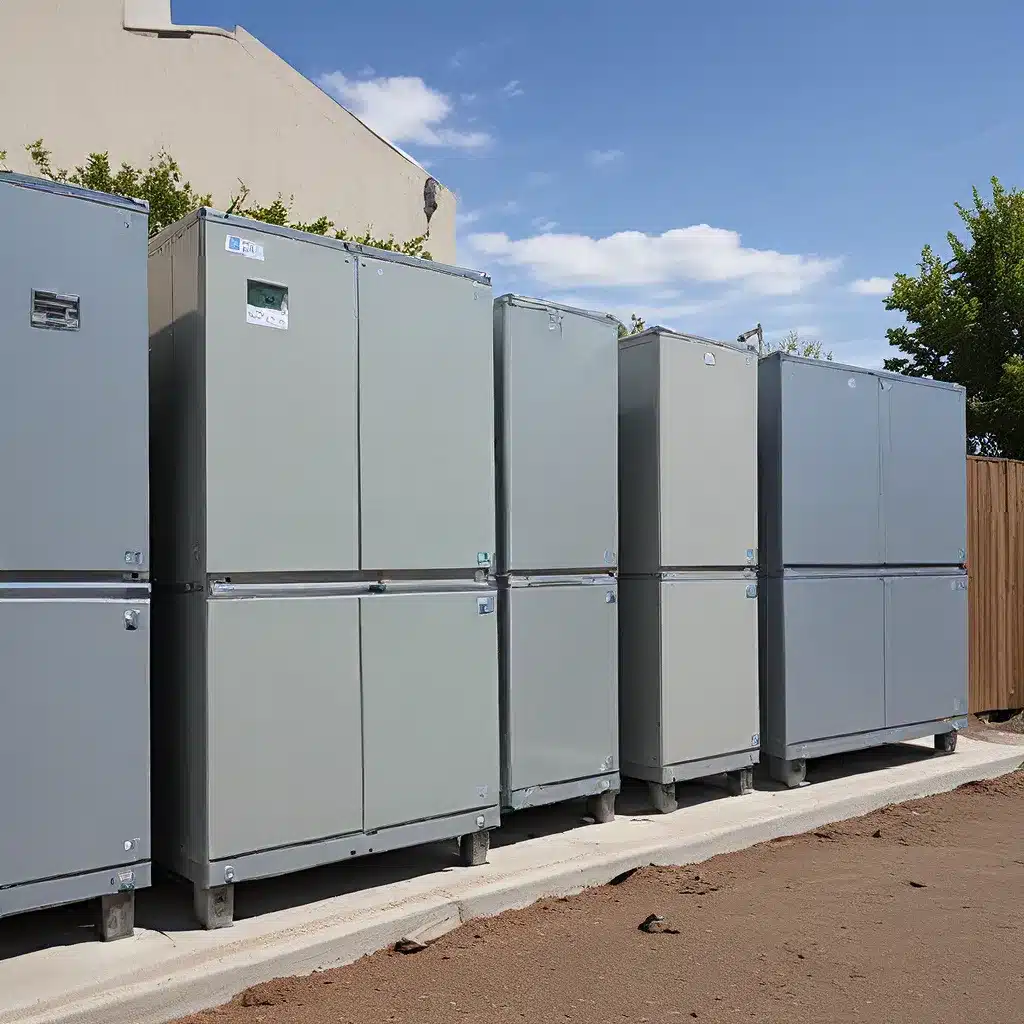
As a renewable energy enthusiast, I’ve been following the exciting developments in battery storage technology with keen interest. The future of sustainable energy is undoubtedly intertwined with our ability to store and efficiently use the power we generate from clean sources like solar and wind. And let me tell you, the innovations happening in this space are nothing short of revolutionary.
Overcoming the Limitations of Lithium-Ion
For years, lithium-ion batteries have been the go-to choice for powering our electronic devices, electric vehicles, and even grid-scale energy storage systems. But as our energy needs continue to grow, researchers have been searching for new battery chemistries that can offer even greater performance, longevity, and sustainability.
Enter the hybrid redox-flow batteries. These innovative energy storage solutions are poised to disrupt the market and transform the way we power our homes, businesses, and critical infrastructure. Unlike traditional lithium-ion batteries, which rely on solid electrodes, hybrid redox-flow batteries use liquid electrolytes that flow through the system, allowing for a more scalable and long-lasting energy storage solution.
According to industry experts, these batteries can be a game-changer for renewable energy integration. Their ability to store large amounts of energy and discharge it on demand makes them the perfect complement to intermittent sources like solar and wind. And the fact that they can be charged and discharged thousands of times without significant degradation means they can provide reliable, long-term energy storage for our homes and communities.
Designing the Next Generation of Sustainable Batteries
What’s really exciting about this technology is the level of innovation happening at the material level. Researchers like Chao Luo, an associate professor at the University of Miami, are leading the charge in developing new organic molecules that can revolutionize the performance and sustainability of these advanced batteries.
Luo’s work, supported by a grant from the National Science Foundation, is focused on understanding how the structure of these organic molecules can impact the batteries’ energy storage capacity, charging speed, and longevity. By designing and studying these novel materials, Luo and his team are paving the way for a new generation of green and sustainable batteries that can power our homes, our transportation, and our critical infrastructure.
One of the key advantages of these hybrid redox-flow batteries is their ability to use low-cost, abundant materials instead of the rare and toxic heavy metals found in traditional lithium-ion batteries. This not only makes them more environmentally friendly to produce, but it also helps to reduce the overall carbon footprint of the energy storage supply chain.
Pushing the Boundaries of Performance
But the innovation doesn’t stop there. Luo and his colleagues are also exploring ways to push the boundaries of battery performance, developing extreme batteries that can withstand temperature ranges from as low as -60°C to as high as 100°C. This kind of rugged durability could be a game-changer for applications in disaster response and off-grid renewable energy systems, ensuring that critical facilities like schools and hospitals have uninterrupted power even in the face of extreme weather or other emergencies.
And when it comes to electric vehicles, Luo is working on fast-charging solutions that could reduce recharge times from hours down to just 15 minutes or less. Imagine being able to top up your electric car’s battery in the same time it takes to fill up a gas tank – that’s the kind of breakthrough that could help accelerate the adoption of EVs and drive us closer to a sustainable transportation future.
Inspiring the Next Generation of Clean Energy Pioneers
As exciting as these technological advancements are, what really inspires me is Luo’s commitment to inspiring the next generation of STEM researchers and clean energy pioneers. By sharing his work and the potential of these innovative battery technologies, he’s helping to cultivate a growing workforce dedicated to advancing sustainable energy solutions.
And with the launch of the Miami Institute for Clean Energy earlier this year, the University of Miami is doubling down on its efforts to drive the advancement of clean energy technologies and tackle the challenges of sustainable energy production. It’s initiatives like these that give me hope for a future where renewable energy is not just a viable option, but the norm – a future where our homes, our vehicles, and our critical infrastructure are powered by clean, reliable, and affordable energy solutions.
So, if you’re like me and you’re passionate about the future of renewable energy, keep a close eye on the developments happening in battery storage technology. Because with innovations like these, the possibilities for a more sustainable and resilient energy future are truly limitless.
And who knows, maybe one day you’ll find yourself powering your home with a cutting-edge energy storage solution that was inspired by the groundbreaking work of researchers like Chao Luo. The future is bright, my friends, and it’s powered by clean, innovative, and transformative energy solutions.

